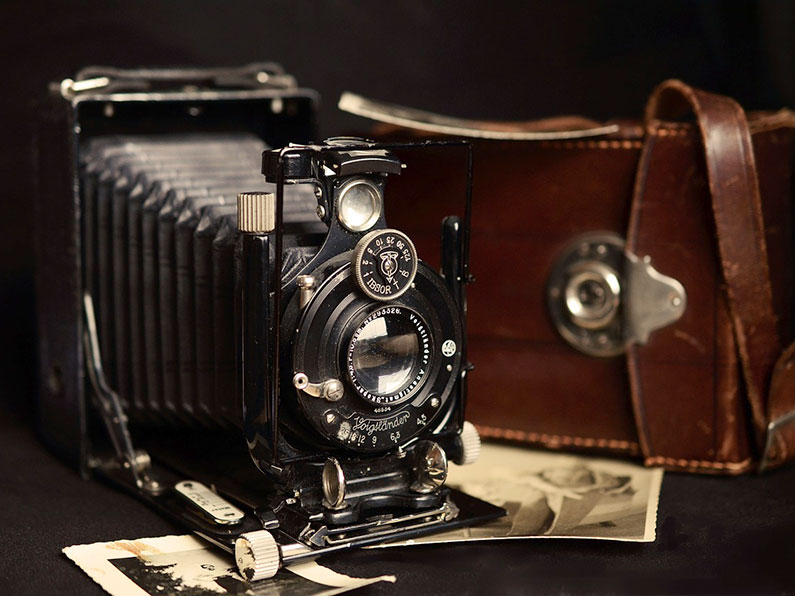A talk by Paul Upton
Paul Upton gave the second talk of the Winter Season in the Library on 9th October when the subject was James Date, Watchet’s first professional photographer.
Apart from the engraving that Turner made following his 1811 visit to the town, there are very few early depictions of Watchet. 50 years later, James Date was to produce countless records of the thriving seaside port.
With the aid of a camera that had been made by Paul’s grandfather and diagrams, Paul explained the processes adopted by early photographers. The forerunner of the process used by Date was the Daguerreotype, which produced a one-of-a-kind photograph on a silver-coated copper plate. Glass-based photographic plates, treated with silver nitrate, became available in the 1850s for negatives on glass – the wet collodion process. The plate had to be exposed in the camera and developed before it dried. The dark cloth that we are used to seeing covering the camera and photographer was necessary to allow the photographer to see the image and also to correct the distortion caused by the lens.
For landscape photography, a complete portable darkroom was necessary, and there is a Date photograph that shows one on the beach at Watchet.
James Date came from a Watchet family, and we were shown painted portraits of James and his wife. Such portraits denoted a degree of wealth and status, yet the very medium in which James excelled would be the one that signalled to a large degree the end of the painted portrait. Within a couple of decades, Cartes de Visite – a photograph mounted on a piece of card the size of a formal visiting card – were commonplace.
Little is known about Date’s earliest photographic endeavours. A James Date is listed as a ‘grocer and draper’ in the town in 1840, and it is thought he began taking photographs using a stereoscopic camera out of interest rather than as a commercial enterprise. In the first edition of the West Somerset Free Press, printed in 1860, there is an advertisement for a studio in Dunster under the name of James Date.
From this time onwards, for 20 or so years, Date took countless photographs of local people and places, although sadly there are none of Nether Stowey. Paul felt that Date had a wonderful eye for the composition of a photograph and we can see this when we analyse the images. He recorded the building of Watchet’s East Quay in 1861-1862 and what was then the terminus building of the West Somerset Railway in 1862.
The Dates were Methodists and were responsible for the building of the Methodist Church, which was completed in 1871. In 1875, the Lifeboat Station was built – 8 horses were required to pull the lifeboat out into the sea! These buildings, the paperworks, and so many other industrial and maritime subjects were all recorded through the lens of James Date. Occasionally, he went further afield, and we have his photograph of the Clifton suspension bridge.
James Date eventually sold all of his equipment to H H Hole of Wiliton, who, through three generations, continued to record the people and places of West Somerset.

